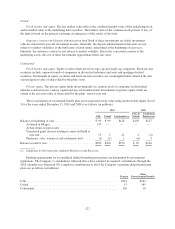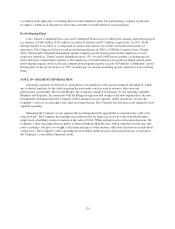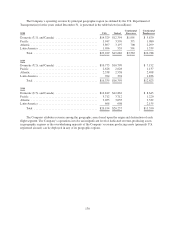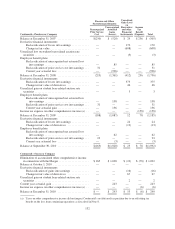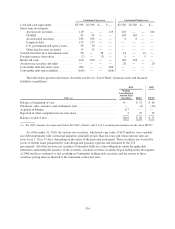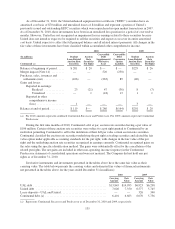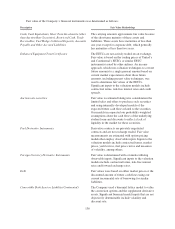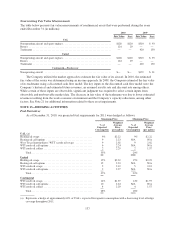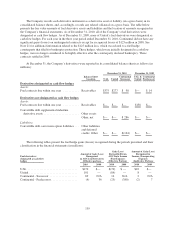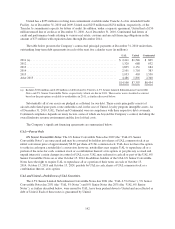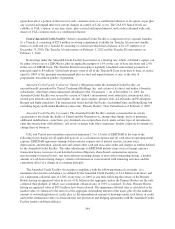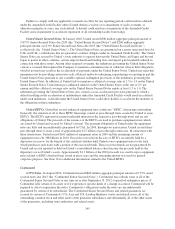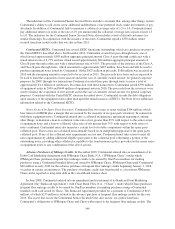United Airlines 2010 Annual Report Download - page 138
Download and view the complete annual report
Please find page 138 of the 2010 United Airlines annual report below. You can navigate through the pages in the report by either clicking on the pages listed below, or by using the keyword search tool below to find specific information within the annual report.
Fair value of the Company’s financial instruments was determined as follows:
Description Fair Value Methodology
Cash, Cash Equivalents, Short Term Investments (other
than Auction Rate Securities), Restricted Cash, Trade
Receivables, Fuel Hedge Collateral Deposits, Accounts
Payable and Other Accrued Liabilities
The carrying amounts approximate fair value because
of the short-term maturity of these assets and
liabilities. These assets have maturities of less than
one year except for corporate debt, which generally
has maturities of less than two years.
Enhanced Equipment Trust Certificates The EETCs are not actively traded on an exchange.
Fair value is based on the trading prices of United’s
and Continental’s EETCs or similar EETC
instruments issued by other airlines. An income
approach, which uses valuation techniques to convert
future amounts to a single present amount based on
current market expectations about those future
amounts, including present value techniques, was
used to determine fair values of the EETCs.
Significant inputs to the valuation models include
contractual terms, risk-free interest rates and credit
spreads.
Auction rate securities Fair value is estimated taking into consideration the
limited sales and offers to purchase such securities
and using internally-developed models of the
expected future cash flows related to the securities.
Our models incorporated our probability-weighted
assumptions about the cash flows of the underlying
student loans and discounts to reflect a lack of
liquidity in the market for these securities.
Fuel Derivative Instruments Derivative contracts are privately negotiated
contracts and are not exchange traded. Fair value
measurements are estimated with option pricing
models that employ observable inputs. Inputs to the
valuation models include contractual terms, market
prices, yield curves, fuel price curves and measures
of volatility, among others.
Foreign Currency Derivative Instruments Fair value is determined with a formula utilizing
observable inputs. Significant inputs to the valuation
models include contractual terms, risk-free interest
rates and forward exchange rates.
Debt Fair values were based on either market prices or the
discounted amount of future cash flows using our
current incremental rate of borrowing for similar
liabilities.
Convertible Debt Asset or Liability (Continental) The Company used a binomial lattice model to value
the conversion options and the supplement derivative
assets. Significant binomial model inputs that are not
objectively determinable include volatility and
discount rate.
136



